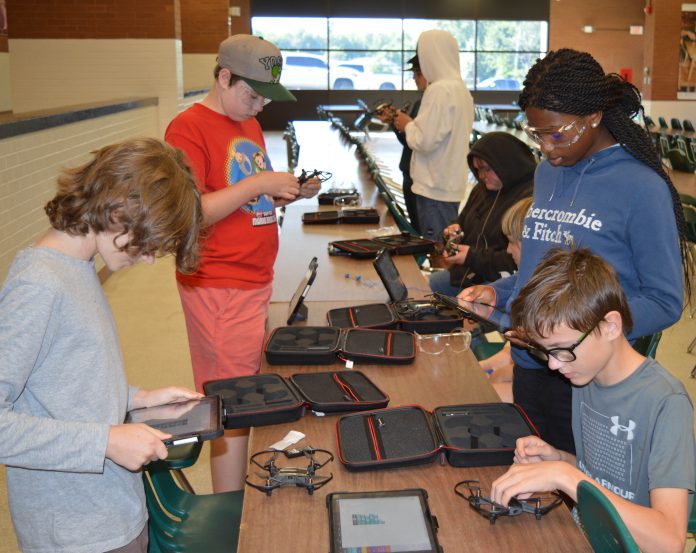An innovative new summer learning program teaches coding and other practical 21st century skills as students take control of robots and drones.
At STEM (Science, Technology, Engineering and Math) camp students in Grades 7 to 10 gain skills in modern technology as they improve their literacy and numeracy. Summer Program Principal Jamey Byers says students develop coding skills and engage in hands-on activities that involve a variety of robots including drones, LEGO robotics and programable robots called Spheros which helps students grasp fundamental STEM concepts.
“Students use their experiences to work through challenges designed to promote problem solving. Working with these challenges promotes perseverance and an understanding of the development process in technological areas. This allows students to work towards solutions to real-world problems,” Byers says. “Throughout the program students continue to improve their literacy and math skills.”
STEM Camp teacher Jason Henstridge explains how students are able to turn their imagination into reality using 3D printers and design software.
“Students have created items such as can openers, personalized jewelry and custom video game interfaces. Others have used the design and printing to augment other projects they are working on,” Henstridge says. Depending on the size and complexity of the creation, printing can take anywhere from 10 minutes to 14 hours to complete. “Most of the materials that we are using in the printers are derived from plant-based crops such as corn and it is biodegradable.”
Henstridge says students also do a lot of coding to operate a variety of small robots. Using “block coding,” students assemble code using “blocks” that direct a device to perform specific steps in a larger overall task. Robots are programmed to navigate obstacle courses, read, and respond to colour patterns on a piece of paper, and even play sounds and music.
“Students are exposed to a variety of technologies that they may not have spent time with before, each technology has its own attraction and students seem to be drawn to different types,” Henstridge says.
Students designed customized “armour” for their Spheros robots and then developed ways to remove the armour from other robots. Henstridge says this resulted in great problem-solving strategies as students pitted their robots against one another in battles.
One of the highlights of the camp is drone flying. Students once again use block coding to give the vehicles a set of flight path instructions and head to the school cafeteria with the drones to put their code to the test. For the first flight students had to make the drone take-off, fly in a square path and land. If students forgot a step, they would have to return to the code for adjustments.
Having mastered the basics students move onto to more complex maneuvers such as navigating a three-dimensional obstacle challenge featuring specific flight paths and objects requiring photos to be taken by the drone.
Henstridge points out that the heavy focus on developing and refining coding skills is sometimes challenging for STEM camp students.
“Persevering through the ‘almost there’ moments to get to the desired result is sometimes tough but, students have been great at supporting each other,” Henstridge says. “Relying on knowledge developed in the group and helping each other has been the key to a successful camp. When one person overcomes a challenge, seeing that it is possible is motivating to the rest of the group.”
Byers says students gain more than coding and robotics skills from STEM camp. They hone the necessary 21st century skills of communication, collaboration, creativity, critical thinking, citizenship and character.
“All of this comes back to the core of what we do, enhancing student achievement and well-being,” Byers says. “These students will be able to use the STEM camp experience to enhance their learning moving into September.”








